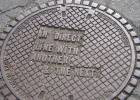
Ulli Diemer
Radical Digressions
Articles Lists
- Selected Articles
- Articles in English
- Articles in French
- Articles in Spanish
- Articles in German
- Articles in Other Languages
- Articles A-Z
- RSS feed
- Subject Index
Selected Topics
- Alternative Media
- Anarchism
- Bullshit
- Capital Punishment
- Censorship
- Chess
- Civil Liberties
- Collective Memory
- Community Organizing
- Consensus Decision-making
- Democratization
- Double Standards
- Drinking Water
- Free Speech
- Guilt
- Health Care
- History
- Identity Politics
- Interviews & Conversations
- Israel/Palestine
- Libertarian Socialism
- Marxism
- Men’s Issues
- Moments
- Monogamy
- Neo-Liberalism
- New Democratic Party (NDP)
- Political Humour/Satire
- Public Safety
- Safe Spaces
- Self-Determination
- Socialism
- Spam
- Revolution
- Trotskyism
Blogs & Notes
- Latest Post
- Notebook 11
- Notebook 10
- Notebook 9
- Notebook 8
- Notebook 7
- Notebook 6
- Notebook 5
- Notebook 4
- Notebook 3
- Notebook 2
- Notebook 1
Compilations & Resources
- Connexions
- Other Voices newsletter
- Seeds of Fire
- Alternative Media List
- Manifestos & Visions
- Marxism page
- Socialism page
- Organizing Resources
- People’s History, Memory, Archives
- Connexions Quotations page
- Sources
- What I’ve been reading
- What I’ve been watching

Words of Wisdom
- Capital is reckless of the health or length of life of the laborer, unless under compulsion from society.
- – Karl Marx

New Hogtown Press
After Retrenchment, A Few Steps Forward
By Ulli Diemer
One of the fascinating things about the U of T campus is the variety of life that it harbours. A case in point is New Hogtown Press, a small pamphlet publisher whose first full-fledged book, published last week, is reviewed on the opposite page.
Hogtown occupies a tiny three-room building on the northern fringe of the campus, without running water or other facilities, abandoned until the Hogtowners were given permission to use the space. Long hours of work by the volunteer collective made it habitable again, but at least one problem still remains: the Post Office considers the location too far off the beaten track to deliver mail to it, so Hogtown has to receive its mail at another location.
Hogtown has its origins in the student movement of the 1960’s. It began as the literature service of the Canadian Union of Students (CUS) when that organization was producing and distributing a series of pamphlets on education, Canadian political economy, and other issues. CUS itself died in 1969 as the student movement ebbed, but a group of Toronto CUS veterans decided that the literature service, at least, should be saved and continued. They formed Hogtown Press, continued distributing the CUS pamphlets, and began producing new titles as well. A loose affiliation with U of T’s SAC was also developed at this time: a relationship that has continued in various permutations and combinations down to the present.
The original collective eventually dropped the operation, which was taken over by a new group of people. The name was changed to New Hogtown Press, although to little avail: to most people who know it, the press is still simply “Hogtown”.
Hogtown’s history is in many ways a microcosm of that of the radical student movement as a whole. In 1975, as in 1968, the goals remain the same: socialism, women’s liberation, an educational system serving the needs of society rather than the needs of corporate rationality. But the tactics have of necessity changed. The large, activist movement of the sixties relied on confrontation and mass pressure, while the socialists of the seventies have had to retrench and devote themselves to laying the groundwork, through education, for another upsurge sometime in the future. In some ways, this reflects the biographies of student radicals of the sixties as well, many of whom have gone on to become radical teachers and professors. They now feel a need for educational materials that provide a different perspective on the world from that of the standard textbooks. Some indeed have started writing newer, more probing, and more radical interpretations of Canadian society. Hogtown, for examples, carries titles by such former U of T activists as Steve Langdon, Greg Kealey, Phil Resnick, Russell Hann, Daniel Drache, Laurel Limpus, and Peter Taylor, all of them campus radicals of the 1960s.
If quantity is any indication, this educational work is having some impact. Hogtown, by no means the biggest of the new radical publishers that have appeared in the last few years, distributes in excess of 12,000 copies of its catalogue across the country, and numbers to the United States and England as well.
At the same time, Hogtown’s centre of gravity definitely continues to be the U of T campus. Certainly U of T people are the ones who actually keep the operation going, since Hogtown relies on volunteer labour for its very existence. Publishing of any kind is a precarious venture in Canada, but publishing radical pamphlets is all the more financially unviable. Certainly Hogtown is unlikely to ever succumb to the temptation to drop its current status as a non-profit organization with charitable status in order to transform itself into a capitalist organization: not only do ideological reasons rule this out; financial realities forbid it as well. After the bills are paid, there is nothing left with which to pay staff. Politics has to be the motivation instead, and for the 15 members of the Hogtown collective, this suffices to keep them donating their spare time.
The result has been slow but steady progress that indicates that there is indeed considerable receptiveness for the materials Hogtown publishes and distributes, including its first four books this fall and winter. The main market continues to be an academic one, but off-campus contacts are significant as well, if only because they indicate a potential for future expansion.
Hogtowners don’t think that reaching out to an off-campus constituency harms their credibility as a university organization. Indeed, the understanding of the university’s social role remains one of the legacies of the sixties’ student movement. It is also the central theme of Hogtown’s first book, On Active Service in War and Peace, which documents the “activist” role of the American historical profession “in war and peace” in serving the corporate power structure in the United States. An introduction by a member of the Hogtown collective maintains that the same patterns exist in Canada, that the university and the academic professions are far from the neutral bastions of objective scholarship they claim to be. So Hogtowners are in no apologetic for entering the same social battles – and they are explicit about which side they are on.
Their commitment to a new linking of university and community has led them to explore new ways of developing and circulating ideas. The theme of “popular education”, of taking their message to a broader audience of working-class people, as well as teachers and students, has consequently taken on increased importance recently. Hogtown now distributes not only academic titles and works of socialist theory, but popular pamphlets on ecology, housing, food prices, and other issues. One of the most important emphases continues to be women’s liberation publications, an issue to which Hogtowners attach considerable importance. Another area of priority has been working class history and social history, areas that most academics and commercial publishers tended to ignore until recently. At the same time, Hogtowners admit that most of these materials continue to be about working class people, rather than for them.
Left-wing materials continue to be published at a rapid rate not only by Hogtown, but by many other radical organizations and collectives. Distribution, however, remains a problem because of the structure of the Canadian market, which is controlled by a few large commercial distribution firms whose reluctance to carry radical materials, especially from small publishers, is, to say the least, notorious. Hogtown’s distribution network is of course small potatoes compared to that of the large monopolies, but at least it exists, so Hogtown has taken on the distribution of other publications which are denied access to commercial markets. As a result the Hogtown catalogue carries titles from such widely different sources as the YWCA and the Exploding Myths Comic Book Collective.
Hogtown also seeks out original manuscripts for publication, many of them too radical or not profitable enough for commercial publishers. A case in point is an upcoming book on occupational health hazards being prepared by a group of U of T medical students.
The collective is far from certain as to what future directions to pursue. At present, they are content to say that the direction will continue to be socialist, and that their future accomplishments will be based on the work that has already been done.
Hogtown’s mailing address is 12 Hart House Circle, University of Toronto. Their phone number is 961-8210.
Published in The Varsity, October 31, 1975
Subject Headings: History - Left History - Publishing - University of Toronto